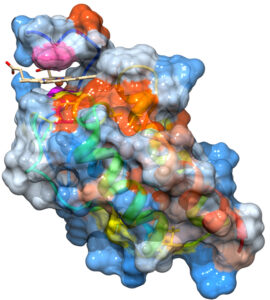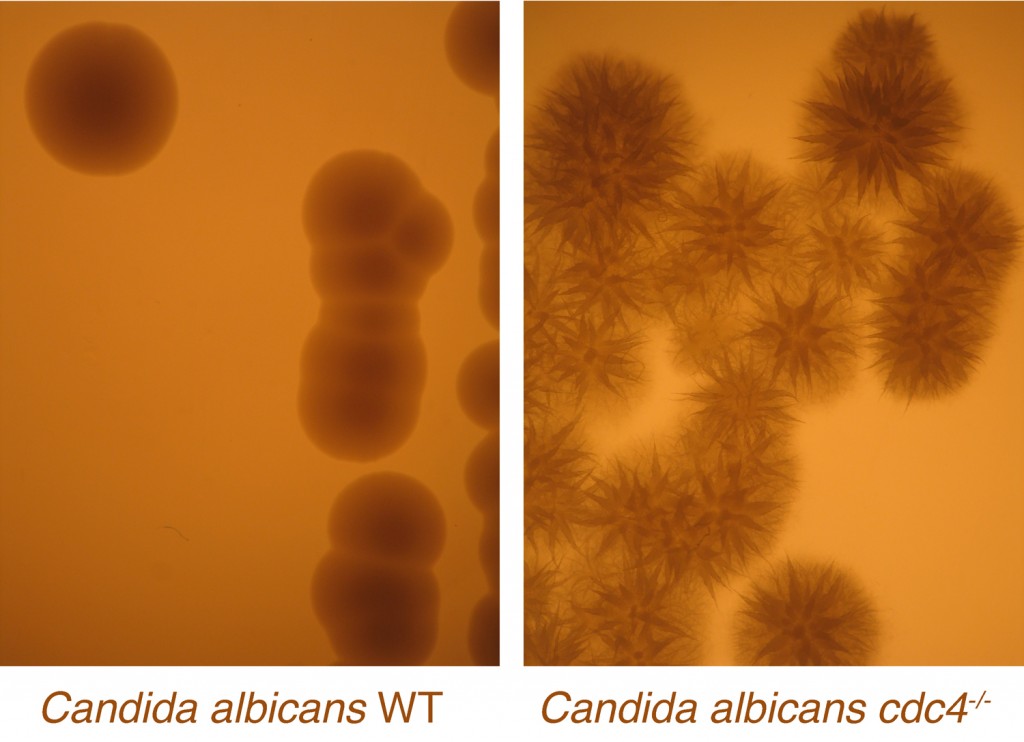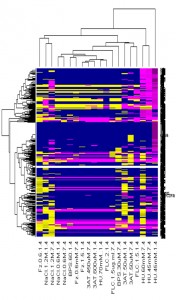Heme-iron acquisition by fungal pathogens

Csa2 crystal structure with the heme (stick model) positioned in the cleft between the CFEM domain and the N-terminal lobe
Due to the scarcity of free iron in the host environment, pathogenic microorganisms have by necessity evolved mechanisms to extract iron from host proteins. The heme cofactor of hemoglobin constitutes the largest iron pool in the animal body. C. albicans is able to extract heme from hemoglobin and to transport it into the cell, where is serves as a source of iron. We identified a family of extracellular proteins, the CFEM proteins, that capture heme from hemoglobin, shuttle it across the cell envelope and deliver it to the endocytic pathway. Our current research focuses on the mechanism of heme capture and transfer by CFEM proteins, and on the characterization of the transfer of heme from the CFEM network to the endocytic pathway. Read more …
Role of ubiquitination and phosphorylation in the morphogenetic switch of C. albicans

The constitutively hyphal cdc4-/- colonies penetrate the agar substrate and make hairy aerial protrusions made of bundled hyphae
Like many fungal pathogens, Candida albicans is able to adopt multiple cellular morphologies. Under standard growth conditions it grows as individual yeast cells, whereas at high temperatures and in the presence of certain chemical signals, it adopts a filamentous, hyphal (mold) morphology. We found that mutants of the ubiquitin ligase SCFCDC4 grow constitutively as hyphae, indicating a role for ubiquitin-mediated protein degradation in the C. albicans morphogenetic switch. Current research in the lab focuses on the critical substrate of SCFCDC4 that is responsible for this mutant phenotype. Since SCFCDC4 substrates universally need to be phosphorylated in order to be recognized and degraded, we also investigate the role of kinases in this regulation.
One interesting substrate of SCFCDC4 that we identified, the cyclin-dependent kinase inhibitor Sol1, is only peripherally involved in hyphal morphogenesis. However it is centrally involved in the coordination of cell growth and proliferation. Read more …
Inhibition of the yeast-to-hyphal switch of C. albicans
Since we found that the ubiquitin ligase SCFCDC4 functions as an inhibitor of hyphal morphogenesis, we set out to identify additional inhibitors of the yeast-to-mold switch. Identifying such inhibitors would improve our understanding of hyphal morphogenesis. We are carrying out screens to identify protein regulators (kinases and phosphatases) that inhibit hyphal formation when overexpressed. We are also screening collections of chemical compounds that inhibit hyphal morphogenesis, and are characterising their cellular targets. Both approaches point to specific cellular pathways that are differentially involved in mold vs. yeast growth. Read more …

